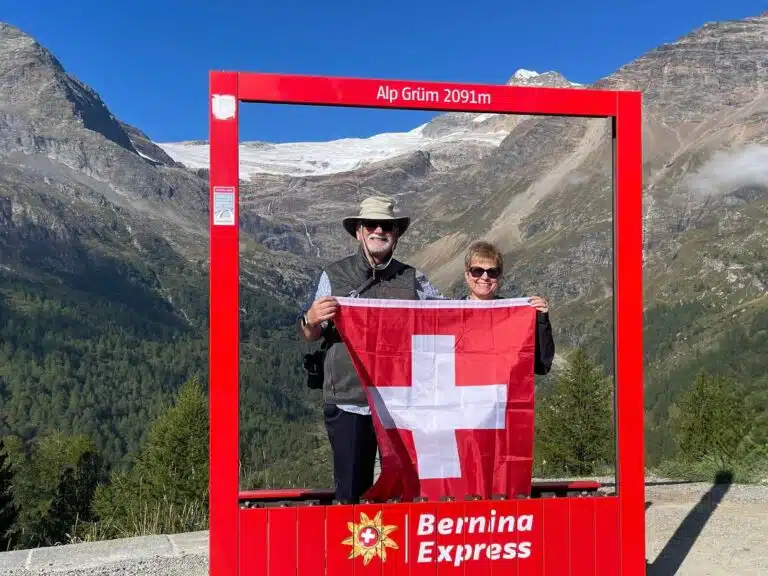Switzerland is a politically neutral country, but it doesn’t mean it’s not prepared for a military attack. Swiss army is famous for having invested in kilometers of tunnels and bunkers hidden in the Swiss Alps.
Find out more about the Swiss Gotthard military fortress.

The First Defense Plan
The Swiss National Redoubt was a defensive plan developed by the Swiss government in the 1880s to respond to foreign invasion.
At the time, Switzerland had already been neutral for more than 60 years after signing the Treaty of Paris in 1815. Still, the unification of Germany and Italy, and shifting powers in Western Europe led the leaders of the Swiss military to devise a defense plan in case of foreign invasion.
The plan involved the fortification of the Swiss Alps with a network of fortresses and bunkers, ready to defend the country against the ground offense. Swiss Gotthard military fortress was one of them.
Passes, such as Gotthard, Oberalp, Furka, and Grimsel Pass, were identified as the main weak points in the mountain defense, and this is where the main efforts were concentrated. Tunnels were dug for quicker communication and transportation of goods, ammunition, and people.
At the time, the Gotthard Railway (Furka steam railway) was opened, and transporting resources and building materials became much easier. Building of the Swiss Gotthard military fortress took less than 5 years.

The National Redoubt Fortifications
The National Redoubt encompassed a widely distributed set of fortifications on a general east-west line through the Alps, centering on three major fortress complexes: Fortresses St. Maurice, St. Gotthard, and Sargans.
These fortresses primarily defended the alpine crossings between Germany and Italy and were outside the industrialized and populated regions of Switzerland. These regions were defended by the “Border Line”, and the “Army Position” somewhat farther back.

General Guisan’s Defence Plan
Until the inter-war period, not much else has been done. However, as other countries started investing in their defense systems, Switzerland began to reevaluate its existing resources.
In the 1930s, General Guisan designed a new defense system focusing on the potential of the Alps as a natural border, where civilians and the government could hide in case of the country’s ambush and occupation.
New tunnels and bunkers were built, at the same time answering the need for jobs during the Great Depression. Swiss Gotthard military fortress underwent modifications and general modernization.

Improving the Redoute During World War II
In the opening years of the Second World War, the plan was expanded and refined to deal with a potential German invasion.
At the time, Switzerland was entirely surrounded by Axis powers, and its neutral position, as well as its role as “Europe’s safe,” made it a potential object of military attacks.
In their invasion plan, Operation Tannenbaum, Germany planned to capture Geneva and Lucerne while Italy would capture the Alps; the two countries would divide Switzerland.
Vulnerable locations such as mountain passes, and lowlands were again fortified, and the problem of lack of manpower and limited resources was addressed.
The Redoubt was to be manned by eight infantry divisions and three mountain brigades. The strategy was focused on deterrence, not offense, aiming to cause the aggressor as much damage as possible during the siege.
It was thought to discourage Hitler and Mussolini from even attempting the attack simply by making the win not worth the losses inflicted along the way.

Visiting the Swiss Gotthard Military Fortress
The Swiss Gotthard military fortress at Gotthard Pass was declassified over 30 years ago and it’s now open to the public.
A short ride to the pass from Andermatt allows the passengers to admire the fantastic views of the surrounding peaks before they move to the vicinity of an inconspicuous grey gate carved into a stone wall.
A two-hour guided trip around the bunker explains the thought behind Guisan’s defense strategy and the clever ideas he enforced to make up for the lack of manpower.
Visitors will have a chance to see the living quarters, the defense systems, the common spaces, and the tunnels connecting the rooms—the fascinating journey through time will captivate even the military skeptics.
A tour of the Swiss Gotthard Military Fortress is part of our 12-day Swiss Alps Grand Rail Tour. The tour includes 11 of the world’s most legendary trains, including the Glacier Express, Bernina Express, Voralpen Express, GoldenPass Line and the Furka Steam Train.

A Railway Thrill
Swiss trains aren’t just about reaching a destination; they’re about experiencing the journey itself.
We invite you to embark on an adventure through these remarkable railways, where every turn unveils a new chapter in Switzerland’s story.
Our 12-day Grand Train Tour Of Switzerland embraces the variety of Swiss mountain cogwheel trains and offer incomparable adventures on 11 Swiss most scenic railways.
This unforgettable journey will take you around Switzerland showcasing the most stunning Swiss scening rides such as:
- Glacier Express
- Bernina Express
- Gornergrat Train
- Jungfrau Railways
- Rigi Cogwheel Train
- Furka Steam Train
Climb up Gornergrat and Jungfraujoch and experience the best of Switzerland in one seamless adventure.
We prioritize your comfort – you will travel 1st class with convenient connecting times. We also organize dedicated luggage transfer so that you can travel light and simply enjoy the ride.
Check for details below.




